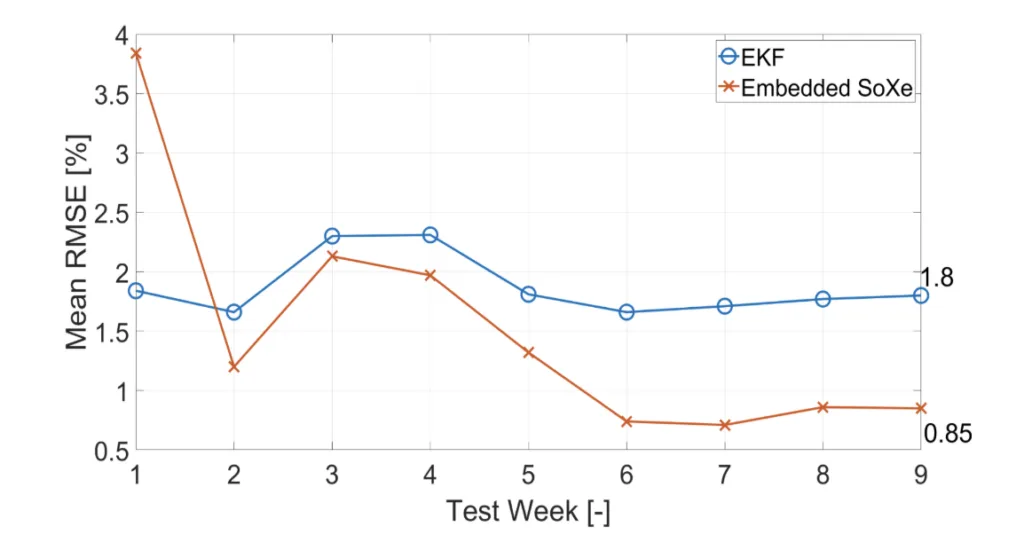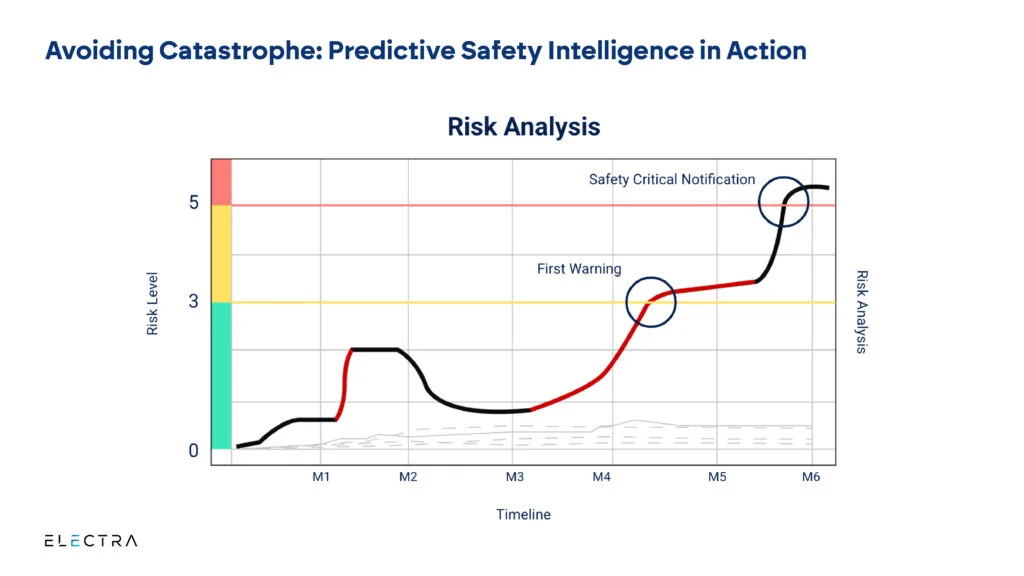In a world racing towards electrification, Battery Energy Storage Systems (BESS) and Electric Vehicles (EVs) are transforming the way energy is stored and utilized, serving as the backbone of modern energy infrastructure. From grid-scale energy storage to mobile battery assets, these technologies bridge the gap between intermittent renewable generation and continuous power demand, ensuring a stable and efficient energy supply. However, as these systems scale, so do the challenges in their operation, including capacity loss, efficiency decline, and increasing safety risks. Whether in large-scale BESS installations or within EV fleets, improperly managed batteries can lead to unexpected failures, costly downtime, and even safety hazards. Recent battery fires and safety incidents serve as stark reminders of the consequences of inadequate monitoring and outdated management strategies.
The Reality of BESS Risks
In January 2025, a major fire at the Moss Landing Power Plant in California forced evacuations and raised concerns over hazardous material release. Another fire at a BESS facility in Escondido, California, triggered mandatory evacuation orders, reinforcing the risks associated with large-scale energy storage. While global grid-scale BESS failure rates have dropped by 97% between 2018 and 2023, these recent events demonstrate that improvements in safety protocols and monitoring technologies remain crucial.

Furthermore, as for EV, in September 2024, Stellantis recalled 194,000 plug-in hybrid Jeep SUVs due to fire risks linked to a battery component, following 13 reported fires occurring when the vehicles were parked and turned off. Additionally, an electric Mercedes EQA exploded while parked in a driveway in the UK, further reinforcing the need for enhanced battery monitoring and safety protocols. These incidents highlight the ongoing necessity for advancements in predictive battery intelligence, proactive safety mechanisms, and thermal management technologies to prevent catastrophic failures across both stationary and mobile battery systems.

The Hidden Challenges: Degradation, Imbalances, and Thermal Runaway
Battery failures rarely happen overnight. They result from a gradual accumulation of imbalances, inefficiencies, and unseen degradation. Among the most pressing concerns:
- State-of-Charge (SOC) Imbalances: Variations in SOC among cells lead to uneven charge distribution, accelerating aging and reducing system efficiency.
- SOC Estimation Inaccuracies: Conventional estimation methods fail to adapt to evolving battery conditions, leading to inaccurate forecasting, poor energy dispatch, and premature failures.
- Degradation and State of Health (SoH) Estimation Inaccuracy: As cells age, their performance diverges unpredictably, resulting in lower efficiency, reduced range, and costly warranty claims.
- Thermal Runaway Risks: Without precise monitoring, several causes can determine a rapid raise in battery temperature ultimately triggering a self-sustaining reaction, escalating into a catastrophic failure in the worst-case scenario.
From Reactive to Predictive: A Shift in Battery Management
Despite advances in storage technology, one thing remains clear: reactive battery management is no longer enough. The transition from passive oversight to AI-powered intelligence isn’t just an upgrade; it’s a necessity!
The industry has long relied on passive Battery Management Systems (BMS) that primarily monitor battery status but fail to take real-time corrective actions when performance deviates from optimal conditions. Traditional BMS solutions provide historical and real-time battery data but lack the ability to predict and prevent failures, leaving operators reactive rather than proactive.
However, as battery systems grow in complexity, the demand for adaptive, AI-driven battery management systems has become more urgent. AI-driven BMS solutions go beyond simple monitoring. Indeed, they actively manage battery performance, optimize charge-discharge cycles, and prevent failures before they occur. This shift is crucial for ensuring that energy storage assets remain efficient, safe, and financially viable.
At the core of this transformation is machine learning and AI-powered analytics, which empower systems to continuously learn, adapt, and refine battery management strategies. Unlike traditional passive BMS, which treat all batteries as static components with predefined aging trajectories, adaptive systems dynamically respond to evolving conditions. They leverage AI to:
- Achieve precise SOC estimation, adapting to dynamic operating conditions with minimal loss of accuracy as the battery ages.
- Predict degradation trends by incorporating nonlinear analysis of operational patterns and environmental conditions, preventing improper utilization that leads to reduced battery life and unexpected warranty claims.
- Detect early failure indicators well in advance, proactively reducing downtime and enabling cost-effective predictive maintenance.
- Enhance energy efficiency by dynamically adjusting charge and discharge cycles based on usage patterns, ensuring optimal performance tailored to real-world conditions.
Furthermore, cloud-based integration allows adaptive BMS solutions to continuously update their predictive models, incorporating insights from fleet-wide battery performance data. This enables operators to benchmark battery health across different deployments, leading to smarter decision-making and cost reductions in maintenance and replacement cycles.
Electra’s EVE-Ai, with its modules Adaptive Controls and Fleet Analytics, represents a breakthrough in this shift, offering an AI-powered, adaptive control system that predicts, optimizes, and protects battery assets in real-time. By leveraging deep-learning algorithms, predictive analytics, and real-time monitoring, EVE-Ai transforms BESS and EV fleet management from reactive oversight to proactive optimization.
AI-Powered Precision Monitoring: Predict, Prevent, and Protect
As mentioned, battery failures are rarely sudden; they often stem from small inefficiencies that go unnoticed until they escalate into costly disruptions.
EVE-Ai serves as an intelligent safety net for BESS and EV operators, using cutting-edge AI-driven monitoring and control to predict, prevent, and mitigate failures before they impact operations. Battery failures are rarely sudden; they often stem from small inefficiencies that go unnoticed, leading to a steady loss of usable capacity. Over time, SOC estimation errors, degradation miscalculations, and energy inefficiencies accumulate, significantly reducing a system’s operational effectiveness. Also reclaiming lost capacity is critical not only for maintaining performance but also for maximizing return on investment. Operators managing BESS and EV fleets must navigate a landscape where minor fluctuations in charge balance, cell degradation, and temperature variations can accumulate into major system failures. Traditional monitoring systems struggle to provide the foresight needed to prevent these issues, reacting only after performance has deteriorated beyond repair.
EVE-Ai transforms this landscape by offering an intelligent, multi-layered solution that merges real-time monitoring, predictive analytics, and automated optimization. Instead of just collecting data, it actively interprets it, identifying patterns that signal early degradation and potential failures. By leveraging machine learning and AI-driven modeling, EVE-Ai ensures that each battery operates at peak performance while minimizing risks associated with thermal runaway, premature aging, and operational inefficiencies.
EVE-Ai is designed to seamlessly integrate into existing battery management ecosystems, unlocking lost capacity by identifying and correcting inefficiencies at every stage of operation. By leveraging advanced SOC correction, intelligent degradation analysis, and dynamic charge-discharge optimizations, EVE-Ai enables operators to restore and sustain optimal battery performance., enhancing their capability with real-time control, adaptive intelligence, and predictive insights. Unlike conventional BMS, which react to failures after they occur, EVE-Ai continuously learns from live operational data, adapting control strategies dynamically to maximize safety and efficiency.

Key capabilities include:
- Accurate SOC Estimation: Achieves less than 1% error, ensuring precise tracking of charge status and utilization by leveraging Kalman filters, neural networks, and model-based adaptive estimations.

** RMSE (Root Mean Square Error)
** EKF (Extended Kalman Filter) – standard measurement
- Adaptive BMS Control: By continuously analyzing performance, EVE-Ai adapts to changing battery dynamics, ensuring optimal performance under varying conditions.
- State of Health (SoH), Degradation Analytics & Predictive Maintenance: Combines advanced real-time aging analysis, fault prediction, and proactive maintenance strategies to optimize battery lifespan and performance. Using nonlinear electrochemical modeling and AI-driven pattern recognition, EVE-Ai tracks degradation trends, analyzes operational stress factors, and identifies temperature fluctuations and depth of discharge cycles to mitigate premature wear. Its historical fault data, anomaly detection algorithms, and probabilistic failure models enable early fault detection, flagging potential cell instabilities weeks to months in advance to prevent catastrophic failures. This ensures optimized performance, up to 40% extended battery life, and a 30% reduction in maintenance costs by dynamically adjusting charge cycles and preventing thermal and chemical stress. Provides less than 3% error while tracking battery aging in real time, predicting degradation trends through nonlinear electrochemical modeling and AI-powered pattern recognition. It analyzes operational stress factors, temperature fluctuations, and depth of discharge cycles to mitigate premature degradation and extend battery lifespan.

EVE-Ai’s Adaptive Control Mechanism transforms BESS risk management by shifting from reactive to proactive safety measures. The thermal runaway prediction chart demonstrates how the system issues an early First Warning well before conditions become critical. By identifying gradual risk escalation, operators can intervene in time, preventing downtime, financial losses, and safety incidents.
- ROI Maximization: Through predictive maintenance, risk mitigation, and energy optimization, operators can achieve up to a 35% increase in return on investment.

The Future of Battery Energy Storage is Intelligent
The next generation of BESS management demands AI-driven intelligence, self-adaptive controls, and real-time optimization. Electra’s EVE-Ai is at the forefront of this revolution, ensuring precision, safety, and profitability for BESS, EVs, and fleet applications. As the energy storage industry expands, investing in AI-driven predictive analytics is no longer optional—it is essential for resilience, safety, and long-term growth.
Want to learn more? Contact us!

